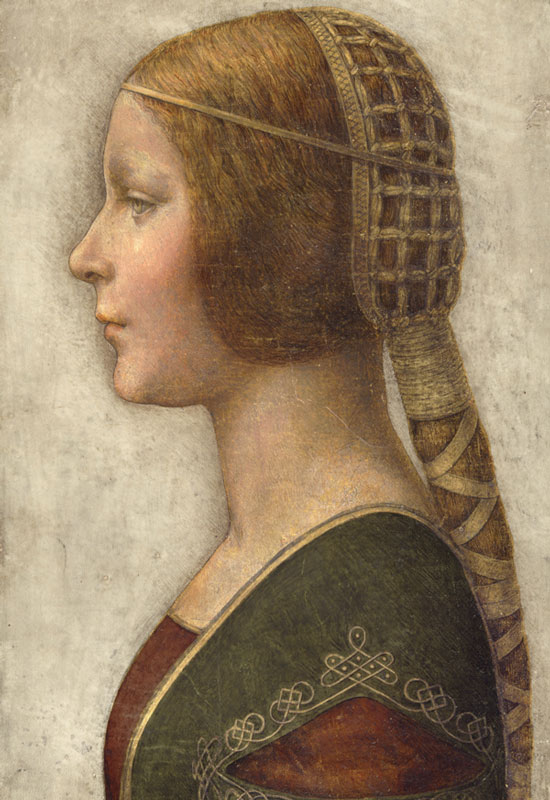Find out the origin of the mysterious picture
The group of scientists recently claimed that they found the mystery in a priceless artwork by Leonardo da Vinci that was once controversial.
>>>The secret of Mona Lisa's true identity
The work has just been auctioned for at least $ 21,000. According to scientists, the picture is taken from a book about the 500 year old family history of the Duke of Milan.

The controversial portrait can be created by Leonardo da Vinci.
The historian Martin Kemp, of Oxford University, believes that the mysterious picture appeared in 1998, it is a portrait of the Duke's daughter made by Leonardo da Vinci for her wedding.
"We believe the picture is in the book based on the stitches and the cut of the knife. This surprised me very much," Martin Kemp told LiveScience.
Meanwhile, many people believe that the non-Leonardo da Vinci painting was created by a German artist named Nazarét in the 19th century. This evidence was rejected after using the dating method. Great estimates of portraits between 1440 and 1650.
Martin Kemp saw the picture for the first time in 2008, immediately thinking that the artist must be a left-handed Da Vinci. Portraits are done on parchment, special paper is often used for writing and printing, with the main material being chalk and ink, unpainted.
'There are at least four copies,' says Kemp. Besides copies in the National Library in Warsaw, there is a copy in London and one in Paris. Each book has been customized and has different art. The evidence that portrayed the portrait separated from the book is only found in Warsaw. Images can be removed in the 18th century when people recover it.
Kemp said Da Vinci was an artist who lived in an area where the Duke of Milan family had for years, from 1481 to 1499. At this time, he was the only one left at left, the researchers said.
Kemp conducted a test and found that the stitches from the drawing were consistent with the marks on the book, the thickness and the paper on both of them matched perfectly. The painting was renamed "La Bella Principessa" despite its controversial origins.
- The picture has 'ghost': Suddenly an extra person appears thanks to a cut
- Find out the mysterious origin of the
- Mysterious aboriginal figure in Australia
- Mysterious black streaks on a picture of the surface of Mars
- The origin of the mysterious sphere in the sky falls
- Mysterious structure under the Israeli sea
- Mysterious creatures appear full moon night, making the fire network of the fire
- Find out the origin of a website
- Excavation of mosaic paintings in Greek tombs
- The mysterious man in the picture of the woman bathing Picasso
- The mysterious origin of the @ key
- New insights into the evolution of the first angiosperms
 'Fine laughs' - Scary and painful torture in ancient times
'Fine laughs' - Scary and painful torture in ancient times The sequence of numbers 142857 of the Egyptian pyramids is known as the strangest number in the world - Why?
The sequence of numbers 142857 of the Egyptian pyramids is known as the strangest number in the world - Why? History of the iron
History of the iron What is alum?
What is alum?